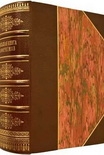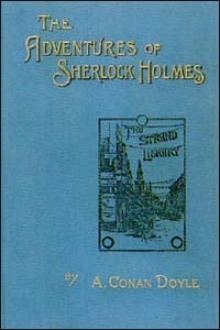My Autobiography Charles Chaplin (best books to read ever TXT) 📖

- Author: Charles Chaplin
Book online «My Autobiography Charles Chaplin (best books to read ever TXT) 📖». Author Charles Chaplin
A voice came from the other room: ‘I beg your pardon?’
Then I whispered through the key-hole: ‘Evidently you have just arrived from New York.’
‘I can’t hear you,’ she said.
‘Then open the door,’ I answered.
‘I’ll open it a little, but don’t you dare come in.’
‘I promise.’
She opened the door about four inches, and the most ravishing young blonde peered at me. I do not know exactly how she was dressed, but she was all silky negligée and the effect was dreamy.
‘Don’t come in or I’ll beat you up!’ she said charmingly, showing her pretty white teeth.
‘How do you do,’ I whispered, and introduced myself. She knew already who I was and that I had the room next door to hers.
Later that night she told me that under no circumstances was I to acknowledge her in public, or even nod if we passed each other in the hotel lobby. That was all she ever told me about herself.
The second night when I came to my room she frankly tapped on the door, and once more we embarked nocturnally. The third night I was getting rather weary; besides, I had work and a career to think about. So on the fourth night I surreptitiously opened my door and tiptoed into my room, hoping to get to bed unnoticed; but she had heard me, and began tapping on the door. This time I paid no attention and went straight to bed. Next day, when she passed me in the hotel lobby it was with an icy stare.
The following night she did not knock, but the handle of the door creaked and I saw it turning slowly. I had, however, locked it from my side. She turned the handle violently, then knocked impatiently. The next morning I thought it advisable to leave the hotel, so again I took up quarters at the Athletic Club.
*
My first picture in my new studio was A Dog’s Life. The story had an element of satire, parallelling the life of a dog with that of a tramp. This leitmotif was the structure upon which I built sundry gags and slapstick routines. I was beginning to think of comedy in a structural sense, and to become conscious of its architectural form. Each sequence implied the next sequence, all of them relating to the whole.
The first sequence was rescuing a dog from a fight with other dogs. The next was rescuing a girl in a dance-hall who was also leading ‘a dog’s life’. There were many other sequences, all of which followed in a logical concatenation of events. As simple and obvious as these slapstick comedies were, a great deal of thought and invention went into them. If a gag interfered with the logic of events, no matter how funny it was, I would not use it.
In the Keystone days the tramp had been freer and less confined to plot. His brain was seldom active then – only his instincts, which were concerned with the basic essentials: food, warmth and shelter. But with each succeeding comedy the tramp was growing more complex. Sentiment was beginning to percolate through the character. This became a problem because he was bound by the limits of slapstick. This may sound pretentious, but slapstick demands a most exacting psychology.
The solution came when I thought of the tramp as a sort of Pierrot. With this conception I was freer to express and embellish the comedy with touches of sentiment. But logically it was difficult to get a beautiful girl interested in a tramp. This has always been a problem in my films. In The Gold Rush the girl’s interest in the tramp started by her playing a joke on him, which later moves her to pity, which he mistakes for love. The girl in City Lights is blind. In this relationship he was romantic and wonderful to her until her sight is restored.
As my skill in story construction developed, so it restricted my comedy freedom. As a fan who preferred my early Keystone comedies to the more recent ones wrote to me: ‘Then the public was your slave; now you are the public’s slave.’
Even in those early comedies I strove for a mood; usually music created it. An old song called Mrs Grundy created the mood for The Immigrant. The tune had a wistful tenderness that suggested two lonely derelicts getting married on a doleful, rainy day.
The story shows Charlot en route to America. In the steerage he meets a girl and her mother who are as derelict as himself. When they arrive in New York they separate. Eventually he meets the girl again, but she is alone, and like himself is a failure. While they sit talking, she inadvertently uses a black-edged handkerchief, conveying the fact that her mother has passed on. And, of course, in the end they marry on a doleful, rainy day.
Simple little tunes gave me the image for other comedies. In one called Twenty Minutes of Love, full of rough stuff and nonsense in parks, with policemen and nursemaids, I weaved in and out of situations to the tune of Too Much Mustard, a popular two-step in 1914. The song Violetera set the mood for City Lights, and Auld Lang Syne the mood for The Gold Rush.
As far back as 1916 I had many ideas for feature pictures. One was a trip to the moon, a comic spectacle showing the Olympic Games there and the possibilities of playing about with the laws of gravity. It would have been a satire on progress. I thought of a feeding machine, and also a radio-electric hat that could register one’s thoughts; and the trouble I get into when I put it on my head and am introduced to the moon-man’s sexy wife. The feeding machine I eventually used in Modern Times.
Interviewers have asked me how I get ideas for pictures and to this day I am not able to answer satisfactorily. Over the years I





Comments (0)